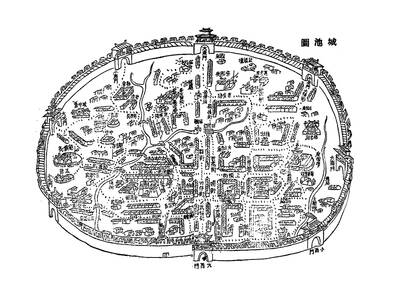If Tom Stoppard and Almost Free Theatre could play a 15-minute Hamlet to cut out the prevarications and welcome the masses in the 1970s, we can do the same for jazz in 2008. So here’s how to translate jazzspeak; follow the plot, and nod in the right places.
First, you need a story line, which goes roughly like this:
In the early 20th century, in the post-slavery American south, “jass” or “jazz” coalesces out of street marches, work songs, hymns, mutated African and European classical music and blues. Louis Armstrong, a child of the New Orleans red-light district, shows the world how a trumpet can deliver the improvised equivalent of an operatic aria.
With the help of the phonograph and a dance craze, the 1920s are dubbed the jazz age. The 1930s swing era, with its big-band heroes Duke Ellington, Count Basie and Benny Goodman, has massive youth appeal. But its eventual commercialism triggers a complex and more ascetic 1940s reaction — bebop. Bop is a fast-moving small-group music of intricate melodies and subtle chords — and saxophonist Charlie Parker is its hipster JS Bach. Because bop is a cerebral music, jazz begins to be displaced as a pop music by rock in the 1950s. Trumpeter Miles Davis makes jazz cooler, John Coltrane’s sax makes it densely passionate, Ornette Coleman’s makes it more structurally freewheeling and loose. An expressionist 1960s movement (avant-garde or free jazz) explores full-on improvisation without reliance on hooks or themes — it loses the wider public, but has a devoted following.
Funky and electric jazz-rock or fusion, develops in the 1970s to slipstream rock’s popularity, its stars including Miles Davis and Joe Zawinul’s Weather Report. A 1980s revival of pre-fusion acoustic jazz follows, with young trumpeter Wynton Marsalis as its standard bearer. The different persuasions evolve and intertwine through the 1990s — and jazz becomes increasingly a world music, with creative independent scenes springing up all over the world, especially in Europe.
Acid jazz
DJ-derived term for clubbers’ enthusiasm in the late 1980s and early 1990s for 1960s soul-bop styles. Spawned a new generation of jazz dancers.
Check out The James Taylor Quartet: Absolute.
Bebop/Bop
Mostly small-group reaction against big-band swing formulae, using more advanced harmonies and devious melodies. Named after the sound of its frequently fast, nervy phrasing.
Check out Charlie Parker: The Complete Dial Sessions.
Blue Note/Blues
Crucial African-rooted jazz ingredient, occurring when the third and seventh notes of a regular scale are roughly flattened, creating a slurred or bent note. Also the name of a legendary jazz record label. Blues and rock still use these sounds within a melody/counter melody/melody 12-bar structure.
Boogie woogie
Blues piano style with a rocking, repeating left-hand bass line, begun around 1900 but later significant in the sound of rock ‘n’ roll.
Check out Meade Lux Lewis: 1927-1939.
Changes
The chord sequence to a song. Being able to improvise over “the changes” — sometimes without rehearsal or familiarity with the other players — is a crucial jazz skill.
Circular breathing
Mostly a saxophonist’s technique, for simultaneously breathing in through the nose and blowing through the instrument, to create a sound without pauses. Frank Sinatra was reputed to have learned circular breathing while singing with Tommy Dorsey’s band, which enabled him to hold notes for longer. In truth, that’s unlikely.
Cool School
1950s reaction against bebop’s often frenetic momentum, with pianist Lennie Tristano its guru. The melodies are as tricky as bop’s, but the approach is quiet and low-key.
Check out Lennie Tristano: Lennie Tristano
Dixieland/trad jazz
Traditional New Orleans and Chicago styles of the 1920s revived by enthusiasts from the 1940s on, as a rootsy reaction against the perceived cerebral style of bebop.
Check out Humphrey Lyttelton: Bad Penny Blues.
Free jazz/free-improv
An approach to improvisation begun in the 1950s in an attempt to let solos off the leash imposed by a repeated theme or chord pattern — and to let groups improvise collectively, with the players listening and reacting instantly to each other’s ideas.
Check out Ornette Coleman: Free Jazz.
Funk
Funk — which originally meant dirty, earthy and bluesy — emerged in the 1950s as a reaction against the Europeanized, chamber-music sound of cool jazz.
Harmolodics
Obscure concept coined by saxophonist Ornette Coleman, referring to a reflexive, total-improv approach in which a player can react melodically, harmonically and rhythmically at once.
Head
The original theme of a song. When bandleaders point to their heads after a succession of solos, it’s an instruction to go back to the theme.
Hot licks
Derisory term in jazz, referring to the repetition of familiar or predictable phrases in a solo, usually to elicit a predictable audience reaction.
Mainstream
Revivalist style of the 1950s onward, recovering lyrical small-group swing styles of the 1930s, with Count Basie’s music a favorite source.
Modal jazz
1950s reaction against the painting-by-numbers styles of only improvising over recycling chord-patterns. Modal jazz is based on sequences of scales more than chords, and seeks to make improvisers more melodically creative.
Check out Miles Davis: Kind of Blue
Multiphonics
Playing two or three notes simultaneously on a wind or reed instrument only designed to produce one at a time — now widely used as an effect.
Post-bop
Roughly describes post-1980s instrumental jazz, phrased with busy melodies and sharp rhythmic turns like bebop, but drawing on many recent developments including fusion and free-improvisation.
Check out Michael Brecker: Time Is of the Essence.
Ragtime
African-American proto-jazz form, in which the accompaniment is syncopated or — “ragged” — so that the underlying beat falls between rather than on the accents of the tune.
Check out Joshua Rifkin: The Entertainer — the Very Best of Scott Joplin
Riff or vamp
Repeated, rhythmically punchy short phrase, sometimes played by a brass or reed section behind an improviser.
Scat
Improvisational singing style, mimicking an instrumental solo with nonsense syllables and percussive sounds.
Swing
A regular beat, but with disguised and ongoing polyrhythmic tweaks. Central to the sensuous, ambiguous feel of a typical jazz pulse.
Third Stream
Variant of 1950s Cool School music, often setting jazz improvisation within European classical frameworks.
Check out The Birth of the Third Stream

May 26 to June 1 When the Qing Dynasty first took control over many parts of Taiwan in 1684, it roughly continued the Kingdom of Tungning’s administrative borders (see below), setting up one prefecture and three counties. The actual area of control covered today’s Chiayi, Tainan and Kaohsiung. The administrative center was in Taiwan Prefecture, in today’s Tainan. But as Han settlement expanded and due to rebellions and other international incidents, the administrative units became more complex. By the time Taiwan became a province of the Qing in 1887, there were three prefectures, eleven counties, three subprefectures and one directly-administered prefecture, with

It’s an enormous dome of colorful glass, something between the Sistine Chapel and a Marc Chagall fresco. And yet, it’s just a subway station. Formosa Boulevard is the heart of Kaohsiung’s mass transit system. In metro terms, it’s modest: the only transfer station in a network with just two lines. But it’s a landmark nonetheless: a civic space that serves as much more than a point of transit. On a hot Sunday, the corridors and vast halls are filled with a market selling everything from second-hand clothes to toys and house decorations. It’s just one of the many events the station hosts,

Two moves show Taichung Mayor Lu Shiow-yen (盧秀燕) is gunning for Chinese Nationalist Party (KMT) party chair and the 2028 presidential election. Technically, these are not yet “officially” official, but by the rules of Taiwan politics, she is now on the dance floor. Earlier this month Lu confirmed in an interview in Japan’s Nikkei that she was considering running for KMT chair. This is not new news, but according to reports from her camp she previously was still considering the case for and against running. By choosing a respected, international news outlet, she declared it to the world. While the outside world

Through art and storytelling, La Benida Hui empowers children to become environmental heroes, using everything from SpongeBob to microorganisms to reimagine their relationship with nature. “I tell the students that they have superpowers. It needs to be emphasized that their choices can make a difference,” says Hui, an environmental artist and education specialist. For her second year as Badou Elementary’s artist in residence, Hui leads creative lessons on environmental protection, where students reflect on their relationship with nature and transform beach waste into artworks. Standing in lush green hills overlooking the ocean with land extending into the intertidal zone, the school in Keelung